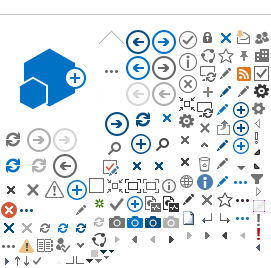By: Michael Pistiner, MD, MMCs, FAAP
If your child is at risk af a severe allergic reaction (anaphylaxis), their doctor will prescribe epinephrine. Epinephrine is a life-saving drug that treats symptoms of a severe allergic reaction and can keep a reaction from getting worse.
Epinephrine that can be self-administered or given in a community setting
There are different forms of epinephrine with pre-measured doses for use in an allergy emergency. These can be easily given to the child or self-administered, if the child is old enough and developmentally prepared. As of September 2025, these include:
- Epinephrine auto-injectors: These include brands such as EpiPen., Auvi-Q and generic equivalents, with different doses based on age and weight. The different models of auto-injectors each have different steps for use.
- Epinephrine nasal spray: The U.S. Food & Drug Administration (FDA) approved the first epinephrine nasal spray, neffy.
Epinephrine training & instructions
Self-administered epinephrine is designed to be easy to use. But it’s important for parents and caregivers to learn how to use them correctly—and to teach others who care for your child, like relatives, teachers or babysitters.
Training should include how to safely hold the child while administering their epinephrine. Be sure to use the specific trainer for your child’s form of epinephrine when practicing and teaching others. Also remember to follow the manufacturer's instructions, have two doses available and follow your child's
Allergy and Anaphylaxis Emergency Plan.
Steps to use epinephrine devices for anaphylaxis
Note: Product instructions vary by brand and model. Refer to the specific manufacturer instructions and consult your child's health care provider for guidance tailored to your child’s needs. The information below is for educational purposes only and not intended to endorse any specific device, product or manufacturer. It is meant to add to, not replace, manufacturer or health care providers instructions.
EpiPen & its generic epinephrine auto-injector
Take the epinephrine auto-injector out of its clear plastic case and hold it in the fist of the hand that you write with (domimant hand). The blue safety cap should be pointing up and the orange needle end pointing down.
Once the auto-injector is in your dominant fist, remove the blue safety cap with your other (non-dominant) hand. The needle comes out of the orange end, so be careful not to hold your hand over the end.
Push the orange needle end firmly against the outer, meaty portion of the child's thigh, about halfway between the hip and knee. Pressure will release the needle and will inject the medicine. You can give the injection through clothes or on bare skin. Hold the leg firmly in place before and during the injection. Also, keep the child from grabbing the auto-injector.
Hold the auto-injector firmly in place for 3 seconds.
Remove the auto-injector by pulling straight out after the 3 second hold. A protective shield will cover the needle as soon as it is removed from the thigh. Put the auto-injector back into its safety tube. Give it to emergency medical service (EMS) responders or your health care team to dispose of.
Massage the area after the injection.
See manufacturer instructions and video here.
Teva generic epinephrine auto-injector
Hold the auto-injector in the fist of the hand that you write with (dominant hand), with the blue safety cap pointing up and the green or yellow needle end pointing down.
Once the auto-injector is in your dominant fist, first remove the green or yellow needle end protector (exposing the orange needle end). Then, remove the blue safety cap. The needle comes out of the orange end, so be careful not to hold your hand over the end.
Push the orange needle end firmly against the outer, meaty portion of the child's thigh, about halfway between the hip and knee. Pressure will release the needle and inject the medicine. You can give the injection through clothes or on bare skin. Hold the leg firmly in place before and during the injection. Also, keep the child from grabbing the auto-injector.
Hold the auto-injector in place for 3 seconds.
Remove the auto-injector by pulling straight out after the 3 second hold. A protective shield will cover the needle as soon as it is removed from the thigh.. Give it to EMS or your health care team to dispose of.
Massage the area after the injection.
See manufacturer instructions and video here.
Auvi-Q auto-injector
Remove the outer case and hold the auto-injector with the hand that you write with (dominant hand).
Pull the red needle end safety guard off the device with your other (non-dominant) hand; the needle will come out of the black end.
Place the black end firmly against the child's outer, meaty portion of their thigh, about halfway between the hip and knee. Pressure will release the needle and will inject the medicine. You can give the injection through clothes or on bare skin.
Hold the leg firmly in place before and during the injection. Also, keep the child from grabbing the auto-injector.
Hold the auto-injector firmly in place for the 2 second countdown.
Remove the auto-injector by pulling the device straight out. The needle in this device self-retracts back into the black end. Put the device back into its case. Give it to EMS or your health care team to dispose of.
Massage the area after the injection.
See manufacturer instructions and video here.
Adrenaclick generic epinephrine auto-injector
Take the epinephrine auto-injector out of its protective carrying case. Hold the auto-injector in the fist of the hand that you write with (dominant hand), with the flat safety cap pointing up and the nipple shaped needle end protector pointing down.
Once the auto-injector is in your dominant fist, use your other (non-domiant) hand to first remove the nipple shaped needle end protector (exposing the red needle end) and then to remove the flat safety cap. The needle comes out of the red end, so be careful not to hold your hand over the end.
Push the red needle end firmly against the outer, meaty portion of the child's thigh, about halfway between the hip and knee. Pressure will release the needle and inject the medicine. You can give the injection through clothes or on bare skin. Hold the leg firmly in place before and during the injection. Also, keep the child from grabbing the auto-injector.
Manufacturer recommendations are to hold the auto-injector in place for 10 seconds.
Remove the auto-injector by pulling straight out after the hold time. If the needle is exposed, then the dose was given. If the needle is not exposed, repeat steps 3 through 6.
Put the device back into its case. Give it to EMS or your health care team to dispose of.
See manufacturer instructions and video here.
Instructions for neffy
Remove nasal spray device from packaging.
Hold the device with your thumb on the bottom of the plunger and a finger on either side of the nozzle. Do not pull or push on the plunger. Do not test or prime (pre-spray). Each device has only 1 spray.
Insert the nozzle into a nostril until your fingers touch your child's nose. Keep the nozzle straight into the nose pointed toward your child's forehead.
Do not point (angle) the nozzle to the nasal septum (the wall between the 2 nostrils) or outer wall of the nose.
Press plunger up firmly until it snaps up and sprays liquid into the nostril.
Try to keep the child from sniffing during or after the dose. If any liquid drips out of the nose, you may need to give a second dose of neffy after checking for symptoms.
See manufacturer instructions and video here.
Remember
Knowing how to use your child's specific form of epinephrine, and teach others, helps protect your child during a severe allergic reaction. Talk with your child's pediatrician or pediatric allergist any time you have questions.
More information
About Dr. Pistiner
 Michael Pistiner, MD, MMSc, FAAP, is a pediatric allergist and the Director of Food Allergy Advocacy, Education and Prevention at Mass General for Children, Harvard Medical School. He specializes in food allergy and anaphylaxis management in infants and toddlers. Dr. Pistiner's team proposed modified criteria for identifying anaphylaxis in young children and developed the Food Allergy Management and Prevention Clinician Support Tool for Infants and Toddlers (FAMP-IT.org). He has also been deeply engaged in school food allergy advocacy and education at the local, state and national level, having served as Chair of the Food Allergy Management in Schools Advisory Council and member of the federal Workgroup for School Guideline Development for Managing Food Allergy in School. Dr. Pistiner is a member of the American Academy of Pediatrics Section on Allergy and Immunology and Council on School Health. Michael Pistiner, MD, MMSc, FAAP, is a pediatric allergist and the Director of Food Allergy Advocacy, Education and Prevention at Mass General for Children, Harvard Medical School. He specializes in food allergy and anaphylaxis management in infants and toddlers. Dr. Pistiner's team proposed modified criteria for identifying anaphylaxis in young children and developed the Food Allergy Management and Prevention Clinician Support Tool for Infants and Toddlers (FAMP-IT.org). He has also been deeply engaged in school food allergy advocacy and education at the local, state and national level, having served as Chair of the Food Allergy Management in Schools Advisory Council and member of the federal Workgroup for School Guideline Development for Managing Food Allergy in School. Dr. Pistiner is a member of the American Academy of Pediatrics Section on Allergy and Immunology and Council on School Health.
|
